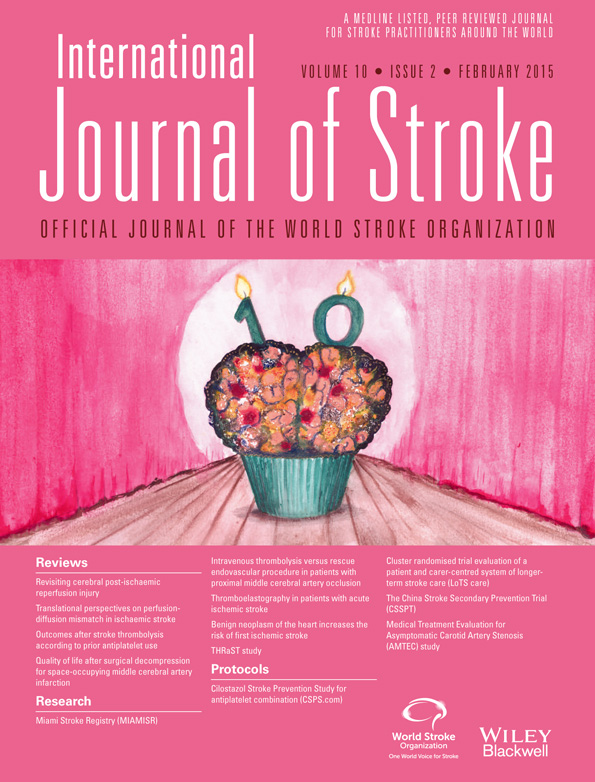Predictive validity of severity grading for cerebral steno-occlusive arteriopathy in recurrent childhood ischemic stroke
Abstract
Background
Cerebral arteriopathy is a risk factor for incident and recurrent childhood AIS. There are no standardized criteria to quantify arteriopathy severity.
Aims
To evaluate a method of scoring severity of steno-occlusive arteriopathy in childhood arterial ischemic stroke (AIS) and its association with recurrence.
Methods
In a single-center prospectively enrolled cohort of 49 children with first AIS and arteriopathy, a composite cerebrovascular stenosis score (CVSS) was measured by two independent raters as the sum of stenosis scores in each of 18 intracranial large and medium arteries, where 0 = none; 1 = low-grade, 1–50%; 2 = high-grade, >50–99%; 3 = occlusion, 100%. Cox proportional-hazards models were used to determine the association of CVSS with recurrence. The analysis was stratified by presence or absence of moyamoya arteriopathy (syndrome or disease).
Results
At a median follow-up period of 2·5 years (range: 0·8–9), 18/49 children (37%) experienced a recurrence. Median time to recurrence was 0·2 (range: 0·02–2·8) years. Interrater agreement was good, with an intraclass correlation coefficient of 0·77 [95% confidence interval (CI) 0·63–0·87, P < 0·001). Higher CVSS was associated with higher recurrence rate [hazard ratio (HR) per point 1·09, 95% CI 1·04–1·16, P = 0·001]. Among those with moyamoya arteriopathy, CVSS was associated with recurrence (HR per point of CVSS 1·11, 95% CI 1·03–1·19, P = 0·004), but there was no association in those without moyamoya arteriopathy (HR per point of CVSS 0·91, 95% CI 0·75–1·09, P = 0·32).
Conclusions
The CVSS is a reliable measure of severity of steno-occlusive arteriopathy in childhood stroke. This preliminary study suggests that higher CVSS is associated with stroke recurrence in children with moyamoya arteriopathy.




